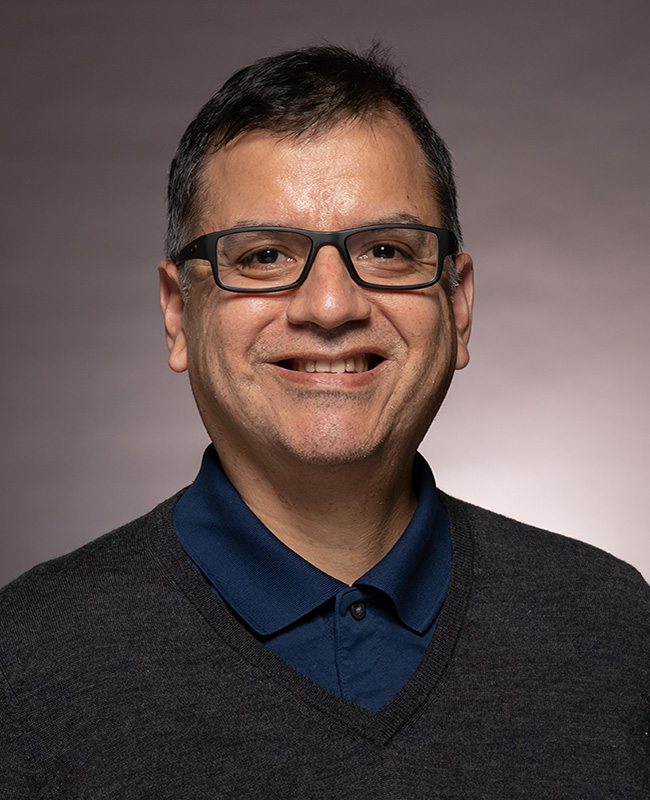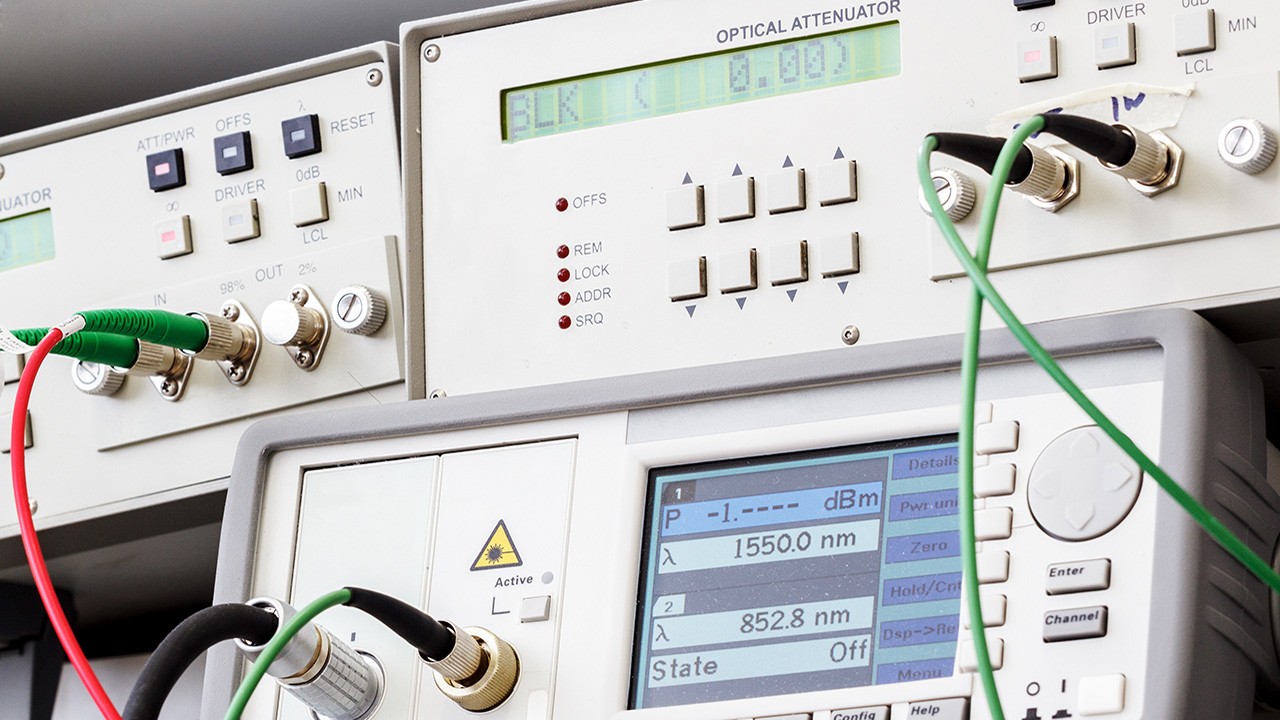Jose Castro, Distinguished Engineer and Fiber Optics Research Manager at the Panduit Jack E. Caveney Innovation Center, discusses his background, fiber innovation, the critical role of the middle mile, and how AI is reshaping network demands.

Q: Can you tell us about your background and what you do at Panduit?
Jose: My background is in electrical engineering. I came to the U.S. to pursue a master's degree and then a Ph.D. in electrical engineering, focusing on optical communications and photonics.
I manage the fiber lab at the Panduit Jack E. Caveney Innovation Center, and during my career, I have conducted research in various optical technologies – lasers, waveguides, and holography. I have focused in particular on optical communications because of its significant impact on connecting society and its synergy with other technologies like computing, which began many years ago.
At Panduit, I develop optical solutions for data centers – both intra- and interconnectivity – as well as for broadband and structured cabling. I believe the influence of optics in driving technological advances continues today, with new innovations constantly emerging. In recent years, my group has gained hands-on experience testing and modeling photonic circuits, high-speed lasers and transceiver prototypes, and working with new types of fiber such as multicore and low-latency fiber.
Q: What’s the Fiber Lab?
Jose: With the rapid evolution of AI, the growth of optical communications, and the potential rise of quantum technologies this decade, optics are at the core of everything. AI isn’t just about graphics processing units (GPU) processing – communication is equally critical to overall system efficiency. While electrons are well-suited for computation, photons are essential for speed and reach.
Our lab focuses on reducing latency, expanding bandwidth, and exploring advanced modulation formats. We’re also evaluating next-generation fibers, which can significantly reduce latency and help push the capacity limits of today’s fiber infrastructure. Contrary to what many believed years ago, optical fiber is not infinite – we are approaching its physical limits. New technologies are needed, including multicore fibers to increase interconnection density, fibers with lower dispersion and broader optical bandwidth, new materials for optical amplifiers, and even faster transceivers using advanced modulation techniques, among many other innovations.
What makes our Fiber Lab exceptional is not only its state-of-the-art equipment but also the people behind it – Ph.D. and master’s-level researchers actively exploring the future of optical communication.
Q: How does the boom in fiber-to-the-home initiatives impact your work?
Jose: We always keep that boom in mind. Fiber optics have enabled applications that were unimaginable 30 or 40 years ago. The impact on everyday users has been profound, and this became especially clear during COVID. The digital divide – between those with sufficient bandwidth and those without – was impossible to ignore. People with adequate connectivity could work remotely; those without it could not. This gap affected not only workers but also students. Those without the means to attend virtual classes lost valuable time – time that is difficult to recover in today’s competitive world.
Looking ahead, with emerging technologies like virtual and augmented reality (VR/AR) and more capable AI, fiber-to-the-home (FTTH) deployments will be even more critical for economic and educational development – not just in the U.S., but globally. I believe those in a position to shape policy increasingly understand the need to invest today in digital infrastructure that can support the demands of the coming decades.
Q: Where is middle mile infrastructure heading in the next five years?
Jose: The first thing to consider is fiber capacity. Some may think a few fiber strands are enough for a town, but the number of users and applications will grow. You also don’t know how that cable might be used in the future – to connect utilities or other services five or six years down the line. Most of the cost is in installing the fiber, so when you lay it, you need to plan for at least 10 years ahead because construction and approvals take time. Fiber itself hasn’t changed much in the last 10–15 years, but transceivers – the components transmitting the signals – evolve quickly. If you have the fiber, you can continue upgrading transceivers, generation after generation.
Q: Which impacts bandwidth more – the number of users or the amount of bandwidth per user?
Jose: It’s an interesting question. Three years ago, we would have said video was the main driver – going from high-definition to 4K and 8K video. But now, AI is changing things. Generative AI is driving demand even more. Right now, people enter text prompts, but soon they will be using audio and video prompts, which consume much more bandwidth. AI content, like real-time video summarization, won’t be cached – it will be generated on the fly and delivered immediately, putting even greater demands on networks.
Q: How is AI changing the way service providers should build their networks?
Jose: Telecom providers are well positioned to meet the growing demand. Their distributed infrastructure gives them a clear advantage in reducing latency. However, to fully capitalize on this opportunity, they will need to invest in technologies that enable computing capabilities closer to end users. In the past, content delivery networks (CDNs) helped alleviate network strain. Today, AI presents a similar challenge, but the business models are still emerging as new opportunities take shape.
Central offices could evolve to host small AI agents that support local demand, enabling faster and more responsive services. Additionally, depending on the region, local ISP huts could focus on AI "expertise" tailored to the specific needs of the communities they serve.
Q: What advantages come from investing in the middle mile?
Jose: When you plan your middle mile carefully, you create opportunities for the future. Some rural areas that seem remote today could become prime locations for data centers – if power is available and environmental conditions are favorable. Strong communication infrastructure will be key to attracting this growth. However, priorities today are different. In the past, data centers were built where fiber was already in place. Now, operators look for sites with reliable power and water and then bring the fiber to them.
Q: How is high-speed optics evolving in the middle mile?
Jose: The evolution is happening rapidly. Just a year or two ago, the focus was on 400 Gigabit per second (G) coherent systems. Now, 800G coherent systems are emerging, capable of reaching 1,000 kilometers over a single wavelength on a single fiber. With 32 or even 40 wavelengths per fiber, the resulting capacity is enormous.
At the other end of the spectrum, many service providers can now deploy 100G coherent systems as a highly attractive option. These systems are extremely power-efficient, compatible with legacy routers, and relatively inexpensive. This means operators can avoid major system upgrades and instead focus their investments on near-term business needs. With 100G coherent, they can transition from 10G to 100G and significantly extend their network capabilities.
As demand grows, these operators can plan future upgrades – from 100G to 400G, 800G, or even 1.6 Terabit per second (T) coherent systems – all while continuing to use the same fiber infrastructure. Of course, reaching those higher speeds eventually requires router upgrades. But this staged approach allows investment to be aligned with demand, helping to reduce business risk and improve return on investment.
Want to Learn More?
Read our latest white paper, Middle-Mile Networks: The Digital Economy Enabler in Rural America, authored by Dr. Jose Castro.



